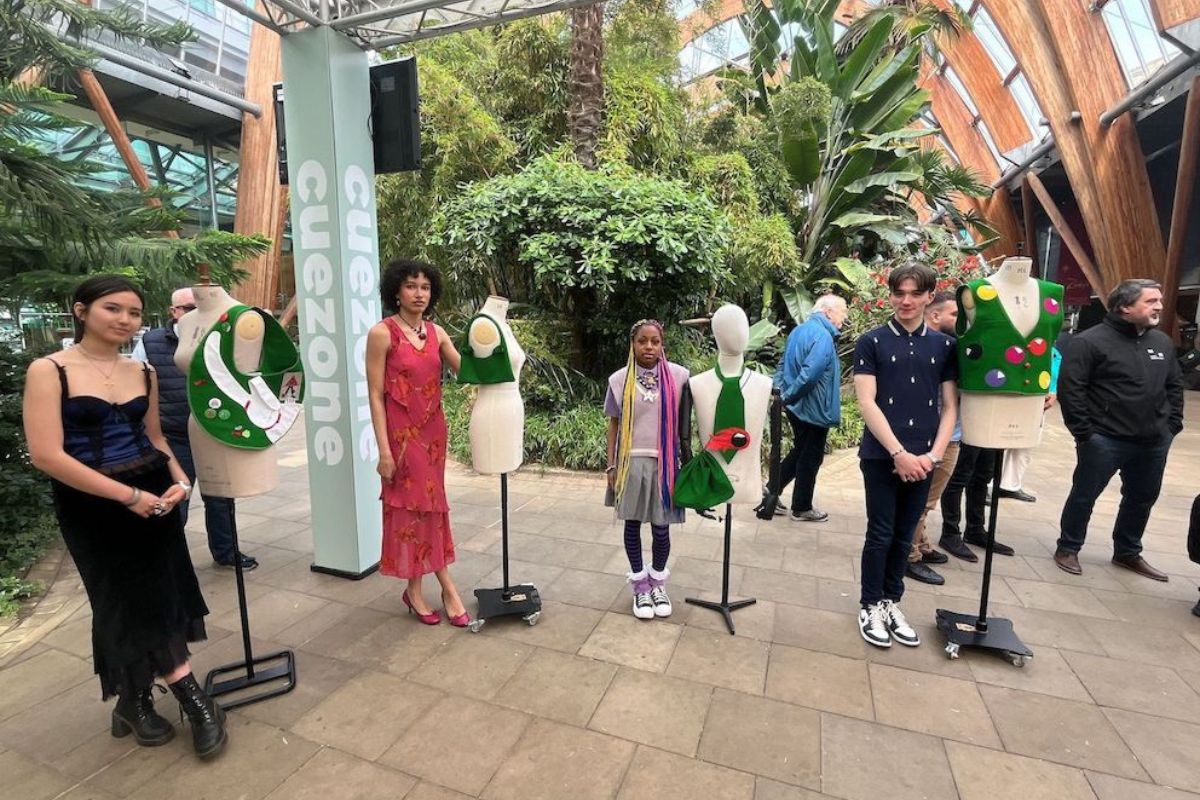The craft of the classroom

Roy Blatchford CBE has visited more than 1,000 schools and colleges in the UK and across the world, in this article Roy seeks to illustrate the craft of the skilled teacher.
Over the past twenty years Roy Blatchford CBE has visited over 15,000 lessons in more than 1,000 settings as a reviewer and inspector of schools and colleges in the UK and across the world. In his latest book, The A-Z of Great Classrooms, Roy seeks to distil what happens when learners are engaged and excited by the craft of skilled and knowledgeable teachers.
‘craft’ noun:
-skill and experience;.. a job or activity that needs skill and experience…
Across continents, I have enjoyed being in the presence of young people and adults being taught by those who love their work, and whose passion for subject shines through their every gesture and word. The best lessons – you just don’t want them to end! And there’s nothing quite like the professional privilege of being in such classrooms, laboratories, dance studios, workshops, music practice rooms, sports halls, libraries, learning centres, sensory zones, outdoor settings, lecture theatres – wherever the learning unfolds.
The Dutch conductor Bernard Haitink (1929 – 2021) enjoyed a career spanning 65 years at the highest levels of music-making. He was a musician ill at ease with the cult of the charismatic maestro, yet in his time, he led the London Philharmonic, the Chicago Symphony Orchestra and was music director of Glyndebourne and Covent Garden. Unlike most of his contemporaries, he never thought of himself as interpreting music, or of wanting to do anything with it other than bring it to life.
Fellow conductor Simon Rattle observed that with Haitink, ‘the normal problems of ensemble or balance simply vanish. If we can’t play well under Bernard, it’s time to take up another profession’. Another commentator on Haitink’s inspiring style noted that he knew exactly what he wanted, when to hold back, when to let go, and when to simply leave it to the players ‘whose devotion to him reflected his faith in them’.
Craft at work
I was struck by both these observations when reflecting on the craft at work in every successful classroom. When one watches the best lecturers, tutors and teachers in action, it is that quiet command which shines forth, and when a decision in class comes up, the qualitatively ‘correct’ choice is made. The action in itself maybe nothing special; the care and consistency with which it is made, is. Acts of intervention, challenge and support for students are for the most part deliberate, rooted in experience. Spontaneity of course always plays its part.
The most effective teaching – the professional craft of the classroom – is a many splendored thing, multi-faceted, with these features at the core:
- positive relationships
- meticulous planning
- skilful orchestration of time
- strong subject knowledge
- adroit modelling
- intellectual curiosity
- fascinating digression
- teacher’s personal stories about learning
- illuminating questions
- humour
These key elements bring subjects and skills alive for students in classrooms, and help them remember new facts, figures, ideas and concepts. For example, watch any skilled art, music or design technology lecturer, – and you see that intuitive understanding of when to intervene, when to back off and when to let go, which characterised Haitink’s approach to working with talented musicians across the world.
I’m no expert on what poor conductors do, although this may resonate: less effective teaching falls back on didactic delivery, low expectations of how students should listen to one another, and a sense of drift, with no solid consensus in the room about the purpose of the session.
Further, skilled and intelligent practitioners know when to speak, when to listen, when to summarise and when to allow digression. The care and consistency with which they conduct is notable. This springs from years of practice observing others doing things right and doing things badly. In the same way that Haitink as a young conductor immersed himself in orchestral scores, top lecturers have paid their dues as juniors, soaking up effective ways of doing from their seniors. Above all, they model and nurture strong professional relationships.
The skilful orchestration of time
In the sparkling classroom, time is very carefully managed and every minute counts. That does not mean that teachers rattle on at pace, galloping through the scheme of work and syllabus for fear of running out of time before the examination arrives. What it does mean is that confident teachers unfold narratives and explanations at a speed consistent with students’ understanding and ability to internalise new concepts, knowledge and skills.
Vitally – and students always comment on this as being important for their learning – it means offering time for young minds to reflect, ponder and yes – sit in awe and wonder. Whether in the business studies suite, the physics laboratory or the Harkness history seminar, there is a conscious design and elegance about these moments in all great classrooms.
Accomplished lecturers in command of their craft, practise being excellent – and those they teach remember them for that, and in turn may be inspired to become teachers or lecturers themselves. The Greek philosopher Aristotle reminds us that excellence is never an accident – that it is always the result of high intention, sincere effort and intelligent execution:
- High intention – teachers set out high, specific ambitions in their respective domains.
- Sincere effort – teachers approach their daily and weekly tasks with a sincerity and commitment that is personally and professionally satisfying.
- Intelligent execution – teachers think intelligently and practically about the best ways to achieve their goals, and be inspiring conductors irrespective of subject.
And let us always remember that, happily, no two lecturers are the same. Everyone has their own X-factor – their unique personality which they bring to a lesson. And given no two lessons are identical even with the same lecturer and the same group of students, the craft of the classroom involves adjusting content to the hour, to the day.
Reflecting on the intricacies, complexities and ‘flow’ of great classrooms, in the end it is the individuality of the teacher which never goes away, just as the individual demands of every student never subside. As the jocular, affectionate one-liner runs: ‘Old teachers never die – they just lose their class’.
By Roy Blatchford
Roy Blatchford is author of The A-Z of Great Classrooms, published by John Catt Educational. He is founder of www.blinks.education consultancy working with schools, multi-academy trusts, colleges, universities and local authorities in the UK and internationally.
FE News on the go…
Welcome to FE News on the go, the podcast that delivers exclusive articles from the world of further education straight to your ears.
We are experimenting with Artificial Intelligence to make our exclusive articles even more accessible while also automating the process for our team of project managers.
In each episode, our thought leaders and sector influencers will delve into the most pressing issues facing the FE sector, offering their insights and analysis on the latest news, trends, and developments.











Responses